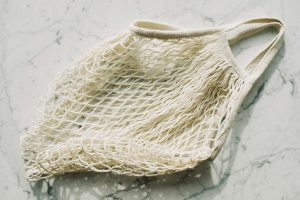Understanding the Lifecycle of the Products You Buy
Welcome to the modern world of consumerism where products seem to appear out of thin air on our store shelves and then disappear just as quickly. It’s easy to get caught up in the efficiency and convenience of buying products, without ever considering how they came to be or what happens to them after we’re done using them. In fact, many of us may not even be aware that the products we buy have a lifecycle. But understanding this lifecycle is not only important for our own knowledge, but it also plays a crucial role in sustainable living and responsible consumption. So, let’s dive into the lifecycle of the products you buy and gain a deeper understanding of our consumption habits.
The Stages of a Product’s Lifecycle
1. Raw Material Extraction
Every product starts with the extraction of raw materials from the earth. Whether it’s wood for furniture, cotton for clothing, or metal for electronics, these materials are sourced from natural resources and often involve destructive practices such as deforestation and mining. It’s important to be aware of the environmental impacts of these extraction processes and consider the sources of the products we buy.
2. Manufacturing
Once the raw materials have been extracted, they are processed and manufactured into the final product. This stage involves energy consumption, emissions, and waste generation. Many manufacturers now have sustainability initiatives in place to reduce their environmental impact, but it’s still important to consider the energy and resources that go into producing the products we buy.
3. Distribution and Sale
After the products are manufactured, they are then transported to distribution centers and stores where they are sold to consumers. This stage also involves energy consumption and emissions, as well as packaging materials for shipping. It’s worth considering how far these products have traveled and the carbon footprint they leave behind.
4. Use
The use stage is where we, as consumers, come into play. As we use the products, we may also generate waste or emissions, depending on the type of product. For example, electronic devices require electricity to function, which contributes to our carbon footprint. It’s important to use products responsibly, maintain and repair them when possible, and dispose of them properly at the end of their lifespan.
5. Disposal
After we’re done using a product, it eventually reaches the end of its lifespan. Depending on the type of product and its materials, it may end up in a landfill, incinerated, or recycled. Landfills contribute to pollution and greenhouse gas emissions, while incineration releases harmful toxins into the air. Recycling is the most sustainable option, but even then, it’s important to know what materials can and cannot be recycled and to properly clean and sort items before recycling.
The Importance of Understanding the Lifecycle
Now that we have a better understanding of the lifecycle of products, it’s clear that our consumption habits have a significant impact on the environment. By understanding the process and the resources involved in creating and disposing of products, we can make more informed decisions when purchasing. We can also support companies that prioritize sustainability and consider the environmental impact of their products.
Furthermore, understanding the lifecycle of products can help us make more responsible and sustainable choices. We can use products for longer, reduce waste, and properly dispose of them when necessary. This not only benefits the environment but also saves us money in the long run.
How to Be a More Conscious Consumer
1. Research Before You Buy
Take the time to research the companies and products you’re interested in buying. Look for sustainable and ethical practices, as well as certifications like Fair Trade or organic. Consider the materials used and how they are sourced. By supporting responsible companies, we can create a demand for more sustainable products.
2. Reduce, Reuse, Recycle
The three R’s of sustainability are important to keep in mind as we consume products. Can we reduce the amount we consume? Can we reuse items instead of buying new ones? And when it’s time to dispose of something, can we recycle it properly? These small changes can make a big impact in the long run.
3. Support a Circular Economy
A circular economy focuses on reducing waste and keeping materials in use for as long as possible. By supporting companies that use recycled materials, offer repair services, or have take-back programs for their products, we can contribute to a more sustainable economy.
In Conclusion
The lifecycle of products is a complex process that involves many stages and resources. By understanding this process, we can make more informed and responsible choices as consumers. Let’s strive towards a more sustainable future by being conscious of the products we buy and their impact on the environment. After all, we only have one planet and it’s up to us to take care of it.










